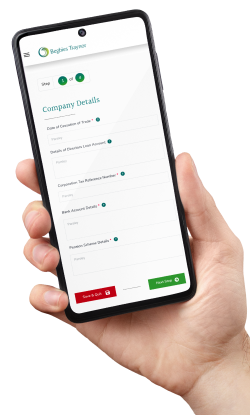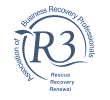Most company directors have at least one experience of a client refusing to pay an invoice, and for some, it’s a recurring problem. Unpaid invoices restrict your cash flow, dent your profitability and can put the future of your business at risk. Clearly, unpaid invoices are not something to be taken lightly, but after chasing multiple times, some businesses are too quick to write off slow payments as ‘bad debts’.
It can be a frustrating process, but there are steps you can take to put significant pressure on business customers who won’t pay. And, if a client cannot pay the money it owes, you can even petition to wind them up and force them into liquidation.
Concerned about the National Insurance increase?
For the 2024-25 tax year, the rate of employer National Insurance increases from 13.8% to 15% adding yet more pressure onto already squeezed cash flows. If you are worried about the impact this could have on your company’s finances, talk to the experts at UK Liquidators. As licensed insolvency practitioners we can explain your options and help you plot a way forward. Call today on 0800 063 9262.
Businesses set their own payment terms and can offer discounts for clients that pay early. In some industries, it’s common to wait 60 or even 90 days for payment, but whatever terms you offer, always include the payment due date on your invoice. If you do not agree on terms with the client in advance, they must pay you within 30 days of receiving either the invoice or the goods or service.
Under late payment legislation, you can charge reluctant payers a late payment fee and interest. You should include details of these charges and when they apply in your payment terms when you work with a new customer.
If you have a slow or reluctant payer, first send them a reminder by email and then phone their accounts payable team. If you still have no luck, send a written notice explaining your intention to apply the additional charges.
Most businesses charge a percentage of the original invoice as a late fee, and for goodwill, you can offer to waive it if the customer makes the payment quickly - for example, within 48 hours.
You can also charge statutory late payment interest on business-to-business transactions at 8% plus the Bank of England base rate.
Liquidation Portal
For Company Directors

If there’s still no sign of payment, send your client a formal request called a Letter Before Action. It should include details of the amount they owe and your original agreement with them, and give them a set period, usually seven days, to settle the invoice.
The letter will explain that if you do not receive payment within that timeframe, you will take court action and the client may be held liable for the court fees and interest. You can write the letter yourself but it usually has more impact if it comes from a solicitor.
If you are owed less than £10,000, you can take the client to small claims court by filing an N1 claim form online. The Letter Before Action provides documentary evidence of the debt. If the court rules in your favour, the debtor must pay the original amount, plus interest and court fees. However, that doesn’t always guarantee you’ll receive the money you’re owed.
If the client still does not pay, you can ask bailiffs or enforcement officers to collect the money on your behalf. They will visit the debtor’s premises to obtain payment or seize goods they can sell to pay off the debt. This process involves a fee that will be added to your claim.
Start your online liquidation today
If you have decided liquidation is the right option for your limited company, you can take the first step and begin the process online using our online portal. Starting the process is quick, simple, and can be done at a time that suits you. Your information will be submitted to your local UK Liquidators insolvency practitioner who will be with you every step of the way. Click here to start your company’s liquidation online.
If no payment is forthcoming or the amount exceeds £10,000, another option is to issue a Statutory Demand, which you can do for any debt over £750. A Statutory Demand is a formal written request for payment that gives the client 21 days to pay what they owe. If the client does not make the payment or successfully challenge the demand, it opens up the pathway to formal insolvency proceedings.
If you’ve got this far and still haven’t been paid, the likelihood is the client can’t make the payment. In that case, the final step is to issue a Winding Up Petition against them. If the client does not pay the amount in full, negotiate a payment plan or dispute the debt successfully, the court can order the Compulsory Liquidation of the company and an Official Receiver will be appointed to wind it down.
It’s important to note that forcing a company into liquidation is not cheap and you should only consider it once you have exhausted all other options. However, you will usually be able to recover your costs from the sale of the company’s assets, provided there are sufficient funds.
If late or non-payers are causing you sleepless nights and damaging your cash flow, we can discuss the steps you can take to rescue and restructure your business. On the other hand, if persistent bad debts mean your company is no longer financially viable, we can help you close it in an efficient and cost-effective way so you can move on to the next challenge. Get in touch for a free consultation or arrange a meeting at one of our 100+ offices throughout the UK.
By completing the test, you will receive:
If you are considering liquidation for your company, taking expert advice at an early stage is crucial. At UK Liquidators, our team of licensed insolvency practitioners are committed to providing limited company directors with the help and advice they need to make an informed decision.




Looking for immediate support?
Complete the below to get in touch